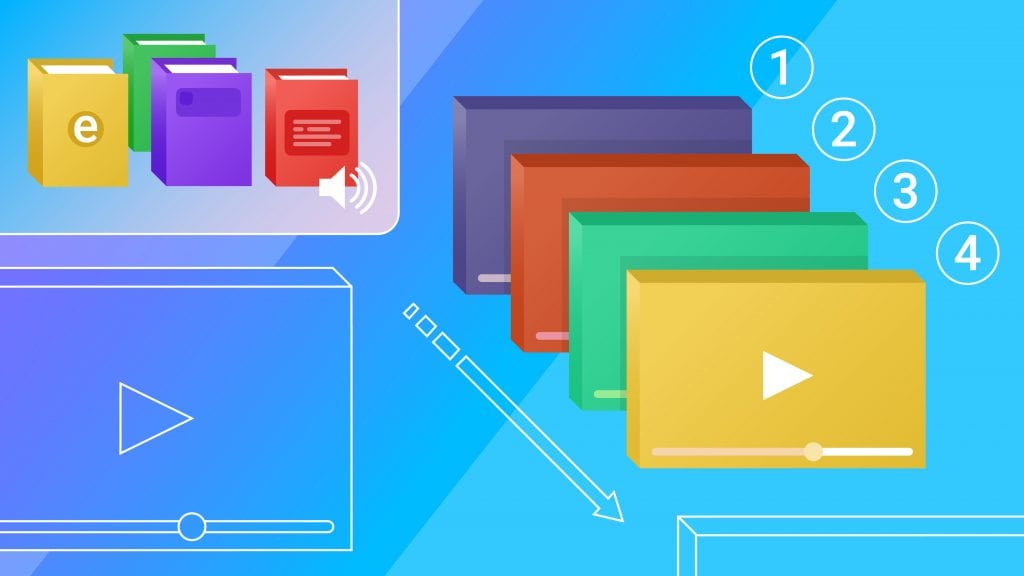What are Micro eLearning and Microlearning?
Get educated on Micro eLearning & microlearning and learn about the different modern-day applications of both learning methods.

Corporations have turned to microlearning and micro eLearning to get information more quickly to employees and at lower costs. Increased usage of smartphones and other electronic devices, such as laptops and tablets, have opened up communication and training methods that increase users’ retention of complex topics.
Today’s job landscape is constantly changing at a rapid rate. Old jobs are disappearing, and new ones are being created for different skill sets adapted to new technologies.
Companies need to train their employees in these new skills, but when can they do this? How do they find the time? Even worse, training programs and seminars are expensive and take employees away from working at their existing jobs.
Enter microlearning and micro eLearning.
What is Microlearning?
Traditional learning assembles groups of people in one place for long periods of time to cover complex subjects. This method is expensive and has become more difficult to do. Microlearning solves these problems.
Microlearning takes long courses and complex subjects and breaks them down into short bursts of smaller learning units. Three to six minutes is typical; the key is brevity.
Learners can study at their convenience and for the time they have available. No one has to attend a classroom anymore.
Microlearning can take several forms such as texts, videos, audio, images, and games. The variety of media helps to keep learners engaged and interested in the topic.
The mental fatigue caused by longer teaching and lecturing sessions is reduced. Students can have a quick learning experience, grasp the key objective and take a break. They’ll come back refreshed and eager to take on the next short concept.
Corporations can use microlearning to train their employees at a lower cost and less loss of productivity. Even better, employees who use microlearning methods have higher retention rates compared to the traditional learning methods.
Studies have found that students can lose 50% to 80% of what they learned the day after a lecture. By the seventh day, the retention rate could be down to 2% to 3%.
Microlearning techniques with short time periods can introduce new concepts while reinforcing previous ones at the same time. As a result, students can raise the retention curve almost back to 100%.
What is Micro eLearning?
eLearning extends microlearning by taking advantage of the internet and electronic devices. It allows access to educational courses and corporate seminars outside classrooms and conference settings.
The universal use and flexibility of smartphones have increased the popularity of micro eLearning. In addition, micro eLearning can be expanded to multiple devices including desktops, laptops, and tablets.
Micro eLearning programs are effective because they free learners to take courses at their convenience on their favorite device. Studying is self-paced.
For a generation that grew up playing video games on their smartphones, the transition to eLearning programs is natural.
How Are Micro eLearning Programs Applied in Industry?
Corporations have been quick to adopt eLearning programs into their training courses. These are a few of the most common applications:
- New employees – Industries with high employee turnover and seasonal demands, such as the hospitality industry, have little time to train employees. They need to train employees quickly and get them on the job at the least cost.
- Compliance – Compliance training is required in most organizations, but it isn’t exciting. Microlearning modules can introduce simple rules for safety procedures, codes of conduct, and environmental guidelines to employees.
- Customer contact – Jobs such as retail and customer support require memorizing details and responses to a variety of customer inquiries. Using training cards with bits of information enables learners to memorize numerous details more quickly.
- Just-in-time – Companies are continuously modifying work processes and introducing new products and need to bring employees up-to-date quickly. Managers can easily put together microlearning how-to videos and podcasts and distribute them immediately over the internet to employees.
Is There Growth in Micro eLearning and Why?
As the cost to create content continues to decline, corporations will find wider uses that drive the growth of micro eLearning products. Increased demand is being driven by the:
- Growth of cloud infrastructures that store data at lower cost and have wider availability to users
- Creation of more opportunities for developers to expand open content applications
- Increased use of mobile apps and social media
- Increased use of augmented reality and virtual reality applications to eLearning
- Increase in job opportunities for remote telecommuting
These Techniques Increase eLearning Popularity
- Games – Clearly, playing games is more fun than studying. Blending micro eLearning with games keeps the user engaged and playing to win.
- Simulations – Videos and podcasts can create real-life simulations that learners can experience.
- Slide shows – More in-depth topics can be easily handled with individual slides that present micro-lessons in just a few minutes.
- Quizzes – User interaction and retention can be increased by presenting quizzes that challenge users’ memory of previous lessons.
- Transcriptions – Transcriptions of audio and videos can make eLearning modules available to those that are deaf or hard of hearing. Check out these transcription services offered by Rev.com.
Heading
Heading 1
Heading 2
Heading 3
Heading 4
Heading 5
Heading 6
Lorem ipsum dolor sit amet, consectetur adipiscing elit, sed do eiusmod tempor incididunt ut labore et dolore magna aliqua. Ut enim ad minim veniam, quis nostrud exercitation ullamco laboris nisi ut aliquip ex ea commodo consequat. Duis aute irure dolor in reprehenderit in voluptate velit esse cillum dolore eu fugiat nulla pariatur.
Block quote
Ordered list
- Item 1
- Item 2
- Item 3
Unordered list
- Item A
- Item B
- Item C
Bold text
Emphasis
Superscript
Subscript

Subscribe to The Rev Blog
Sign up to get Rev content delivered straight to your inbox.




